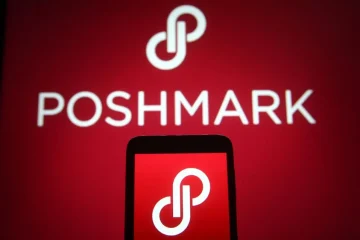Across sectors, businesses are biting the digital bullet, and healthcare is no exception – a makeover of epic proportions is unfolding, redefining the very fabric of this critical industry. With the digital floodgates open, Electronic Health Records have become the linchpin in this new era of healthcare. Healthcare doesn’t get much more efficient than with EHR systems, which juggle big-picture business strategy with microsecond precision to yield world-class patient care. Getting to a fully integrated EHR system is a tough road ahead, paved with obstacles that can sidetrack even the most dedicated healthcare providers. What’s standing in the way of your health system’s EHR integration? Let’s dismantle those barriers and unlock seamless, high-quality care.
Overview of EHR Integration
EHR integration involves the process of consolidating patient records and other clinical information into a single, accessible, and cohesive system. Imagine having a single, up-to-date snapshot of patient information that flows effortlessly between healthcare teams and departments – that’s what this process delivers. Picture a healthcare ecosystem where digital systems work in harmony, permitting doctors and clinicians to access and share critical data at will. This unhindered flow of information leads to insight-driven decision-making and genuinely improved patient health.
Significance in Modern Healthcare
The significance of EHR integration in modern healthcare cannot be overstated. Imagine a healthcare system where providers can easily collaborate, reduce administrative burdens, and truly focus on delivering exceptional patient care – that’s what this new approach makes possible. Healthcare providers get a real advantage when they have patient data at their fingertips – it lets them make smart calls fast, catch potential mistakes, and tailor care to each individual’s needs. Public health initiatives get a major boost from EHR integration, which essentially gathers patient data and hands researchers the information they need to develop smart population health strategies.
Understanding EHR Integration Challenges
Despite its benefits, the road to effective EHR integration is paved with challenges. Healthcare organizations often struggle to launch integrated EHR systems due to a cacophony of issues, including underdeveloped IT infrastructures and clinician skepticism.
One of the most pervasive challenges is managing the diverse and complex landscapes of existing healthcare systems. Rusty old systems can weigh organizations down, making integration a genuine headache. The Integrator’s obstacle course gets even tougher with EHR systems that don’t speak the same language, leading to integration challenges that slow down progress.
Data Migration Complexities
Transitioning from paper-based records or legacy systems to a sophisticated, integrated EHR system entails complex data migration processes. As we transition to the new system, history is on the line – literally. We need to get it right the first time, which means thorough planning and airtight execution to safeguard patient data.
Dealing With Legacy Systems and Data Transfer
Healthcare organizations taking on data migration need to develop a clear strategy, or risk getting lost in the process. Our data makeover starts with an audit to flush out inconsistencies. Once those are resolved, we enlist top-notch migration tools to lock in our data’s accuracy. If you want to get data migration right, it helps to have a trusted EHR vendor partner who’s been through the trenches.
Interoperability Issues
At the core of EHR integration challenges are interoperability issues. Integration becomes a whole lot easier when EHR systems can swap data freely, effortlessly, and without confusing errors. Differences in data formats and standards can really gum up the works.
Overcoming Barriers to System Communication
To overcome interoperability barriers, healthcare organizations should advocate for and implement EHR systems that adhere to established data standards and interfaces. Simplify your workflow and turn to health information exchanges, where multiple systems can come together in perfect harmony.
User Adoption and Training
Another significant challenge in EHR integration is ensuring that healthcare staff are on board and proficient in using the new system. Resistance to change and the learning curve associated with new technology can affect adoption rates.
Ensuring Smooth Transition and Acceptance Among Staff
Comprehensive training programs, continuous support, and involving staff in the integration process from the outset can enhance user adoption. To turn skeptics into supporters, focus on the ‘what’s in it for me’ factor: clarify how the new system will make their jobs easier, and show you care about their opinions.
Maintaining Data Quality and Consistency
The integrity of patient data is paramount in healthcare. EHR integration efforts must prioritize data quality and consistency to ensure that the information within the system is accurate, complete, and updated.
Methods to Ensure Data Integrity During Integration
Employing robust data validation processes, regular data quality assessments, and leveraging technology like artificial intelligence (AI) for data cleansing can help maintain the highest standards of data quality during and after the integration process.
Ensuring Data Privacy and Security Compliance
With the digitization of patient records comes the imperative to protect sensitive information. EHR integration must be aligned with legal requirements and industry best practices to safeguard patient data against unauthorized access and breaches.
Adapting to Legal Requirements and Safeguarding Patient Information
Adherence to health data protection regulations such as HIPAA in the U.S. is non-negotiable. If you want to stay compliant and keep patient data safe, you need to take serious security steps – think strong encryption, tight access controls, and frequent audits.
Cost Management and Financial Planning
The financial aspect of EHR integration cannot be overlooked. Get ready to open your wallet, because making this work means committing to serious spending on top-notch tech, as well as people power through instructor-led training and check-ins after the dust settles.
Budgeting for Integration Without Compromising on Quality or Features
Effective financial planning involves identifying all potential costs upfront, exploring different funding and incentive programs, and investing in scalable solutions that can adapt to future needs without necessitating significant additional expenditure.
Choosing the Right EHR Integration Solution
Selecting the optimal EHR integration solution like Lifepoint is crucial for a smooth integration process. Before you make a move, consider the inner workings of your healthcare organization: what are its needs, how does it operate, and where does it want to be in the years to come?
Criteria for Selecting the Best Integration Solution
Key criteria include the solution’s interoperability capabilities, customization options, user-friendliness, compliance with healthcare standards, and the vendor’s experience and support services.
Leveraging AI and Advanced Analytics
The implementation of Artificial Intelligence (AI) and advanced analytics in the EHR integration process represents a game-changing approach. Integration headaches getting you down? Technologies like these can fix that, freeing you to fine-tune your workflow and make more informed choices.
How AI and Analytics Can Mitigate Integration Challenges
AI can automate and optimize data migration processes, ensuring data is accurately transferred and integrated into the new EHR system. Data integrity is protected by its ability to sniff out and correct inconsistencies. Think of advanced analytics as a debugger for your integration process. It identifies potential speed bumps and suggests tweaks to get your systems running like clockwork.
Post-Integration Support and Updates
The journey doesn’t end with the successful integration of EHR systems. Regular tune-ups and technical Fine-tuning keep the system pacing with breakthroughs in healthcare and cutting-edge tech.
Implementing Ongoing Maintenance and System Improvement Strategy
Healthcare organizations need to establish a strategy for ongoing EHR system maintenance, which includes routine checks, updates, and user feedback loops to identify areas for improvement. Having a top-notch EHR vendor as a partner is crucial – they’ll be your go-to experts for technical support and new feature guidance.
Conclusion
The digital presence of healthcare would be lost without EHR systems coming together in perfect harmony, fundamentally changing how medical professionals interact with patients and vital health information. Picture this: care teams collaborating in perfect sync, wasting no time or resources, and pouring all their energy into delivering the best possible care – that’s what this technology enables. You can’t just stumble into a successful integration – it takes a deliberate plan that considers the technical, operational, and cultural obstacles that stand in your way. Imagine tackling the cumbersome task of EHR integration head-on, equipped with cutting-edge AI technology, thorough user training, and a vigilant eye on data protection and security compliance – what a game-changer for healthcare providers! By bringing their operational house in order, they generate a multiplier effect – superior patient care, rock-solid credentials, and a razor-sharp competitive edge. As healthcare evolves, EHR integration is no longer a nice-to-have, but a must-have. By embracing cutting-edge solutions and innovative thinking, providers can erase the boundaries between different healthcare systems, placing patients at the heart of every decision and shaping a brighter future for healthcare.



